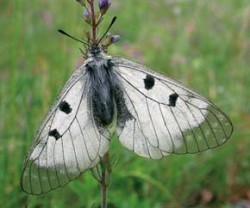Technologický pokrok umožňuje intenzifikaci lesního hospodaření, oblíbenou metodou je i celoplošná příprava půdy, kdy půdní fréza na pasece rozmělní pařezy a zbytky po těžbě na malé kousky, které jsou zapraveny do půdy. Tato technologie zásadně ovlivňuje biodiverzitu vegetace a bezobratlých, hlavně saproxylického hmyzu. Způsobuje šíření invazních a nitrofilních ruderálních druhů rostlin. Pro mnohé živočichy jsou paseky hlavním nebo jediným biotopem, kde mohou přežívat. Technologie by proto měla být nepřípustná na lokalitách, které požívají jakékoli ochrany, kupodivu se ale ještě používá např. v oblasti Biosférické rezervace Dolní Morava.
Technological development supports forest management intensification. One popular measure is special total–area forest soil management, when in a woodland clearing stumps and remnants left behind by logging are crushed by a rotary cultivator into small pieces, which are subsequently incorporated into the soil. The treatment fundamentally affects the species diversity of vegetation and invertebrates, particularly saprophytic insects. In addition, it causes the spread of invasive and nitrophilous ruderal plant species. For many animals, woodland clearings are the main or the only habitat where they can survive. Therefore this measure should be prohibited in any protected site or area. Surprisingly, however, it has been applied in the Lower Morava UNESCO Biosphere Reserve.
 Jasoň dymnivkový (Parnassius mnemosyne) vlivem frézování pasek nedávno téměř zmizel z obory Soutok u Břeclavi. Frézovány jsou i jeho biotopy v Milovickém lese v CHKO Pálava. Foto M. Hrouzek / © M. Hrouzek
Jasoň dymnivkový (Parnassius mnemosyne) vlivem frézování pasek nedávno téměř zmizel z obory Soutok u Břeclavi. Frézovány jsou i jeho biotopy v Milovickém lese v CHKO Pálava. Foto M. Hrouzek / © M. Hrouzek


